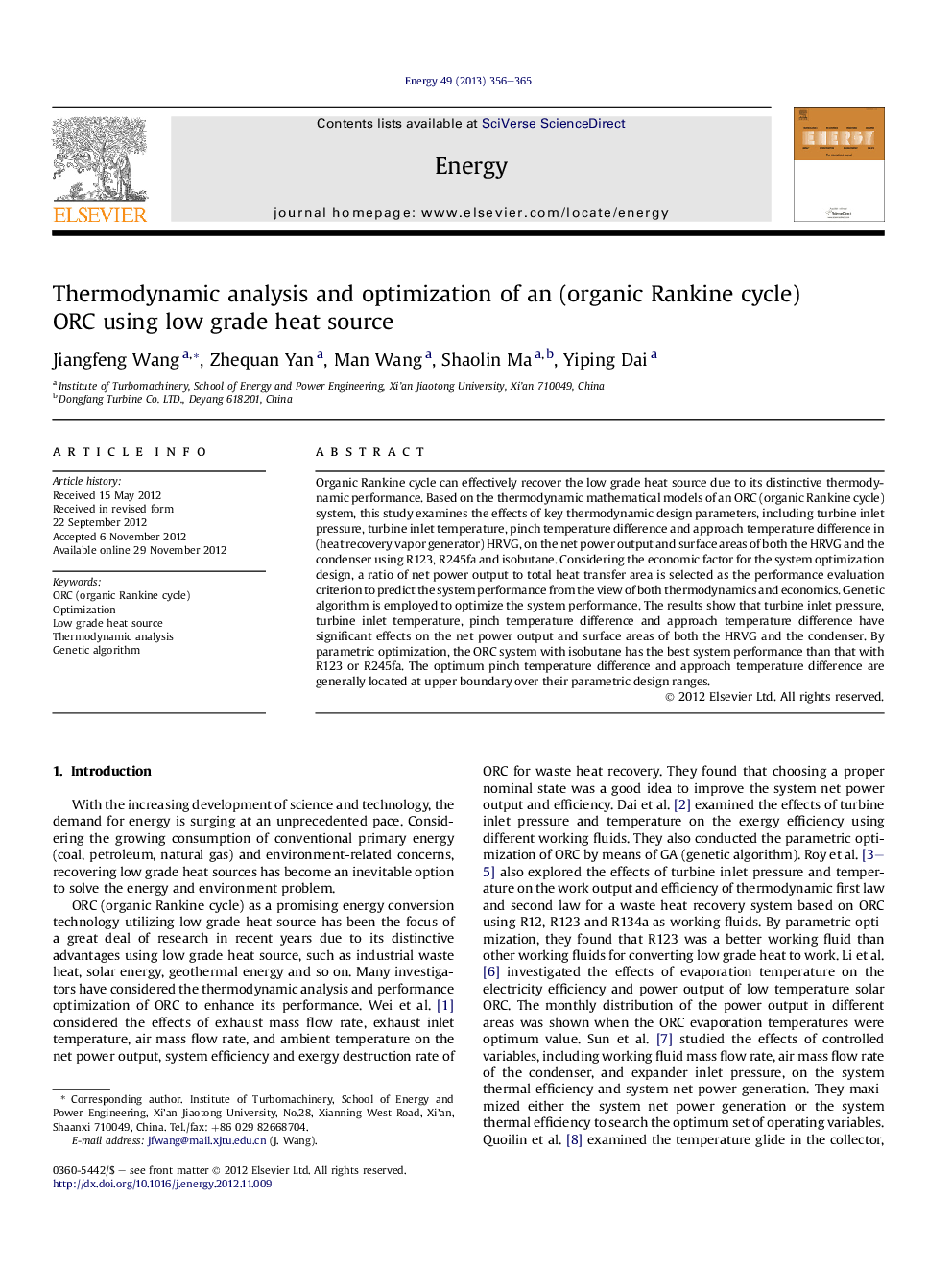| Article ID | Journal | Published Year | Pages | File Type |
|---|---|---|---|---|
| 1733299 | Energy | 2013 | 10 Pages |
Organic Rankine cycle can effectively recover the low grade heat source due to its distinctive thermodynamic performance. Based on the thermodynamic mathematical models of an ORC (organic Rankine cycle) system, this study examines the effects of key thermodynamic design parameters, including turbine inlet pressure, turbine inlet temperature, pinch temperature difference and approach temperature difference in (heat recovery vapor generator) HRVG, on the net power output and surface areas of both the HRVG and the condenser using R123, R245fa and isobutane. Considering the economic factor for the system optimization design, a ratio of net power output to total heat transfer area is selected as the performance evaluation criterion to predict the system performance from the view of both thermodynamics and economics. Genetic algorithm is employed to optimize the system performance. The results show that turbine inlet pressure, turbine inlet temperature, pinch temperature difference and approach temperature difference have significant effects on the net power output and surface areas of both the HRVG and the condenser. By parametric optimization, the ORC system with isobutane has the best system performance than that with R123 or R245fa. The optimum pinch temperature difference and approach temperature difference are generally located at upper boundary over their parametric design ranges.
► The effects of parameters on net power output and heat transfer area are examined. ► A Wnet–Atotal ratio is used to predict the system performance. ► GA (genetic algorithm) is employed to optimize the system performance.
